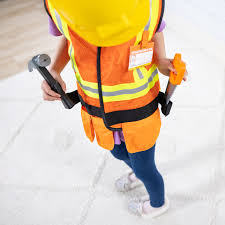tow truck safety clothing products
The Importance of Safety Clothing for Tow Truck Operators
Tow truck operators play a vital role in maintaining road safety and assisting drivers in distress. However, their work often involves significant hazards, including poor visibility, moving traffic, and potential exposure to harsh weather conditions. To mitigate these risks, operators must wear appropriate safety clothing. This article explores the importance of safety clothing for tow truck operators, outlining key features and benefits.
Visibility in Hazards
One of the most critical aspects of safety clothing for tow truck operators is visibility. Tow truck operators frequently work in low-light conditions or on busy highways where they are at risk of being struck by vehicles. High-visibility clothing, such as fluorescent vests, jackets, and pants, is designed to enhance the operator's visibility to other drivers. These garments typically feature reflective strips and bright colors, ensuring that they are easily seen, even from a distance.
In fact, the Occupational Safety and Health Administration (OSHA) mandates that workers in certain settings wear high-visibility clothing to protect themselves from potential accidents. For tow truck operators, adequate visibility is not just a recommendation; it’s a necessity that can mean the difference between life and death.
Weather Protection
Tow truck operators often work in extreme weather conditions, ranging from scorching heat to freezing cold, as well as rain and snow. Safety clothing is designed to provide protection against these environmental elements. For example, insulated coveralls and waterproof jackets can help keep operators warm and dry during winter months, while breathable, moisture-wicking fabrics can keep them comfortable during summer.
Moreover, layering is an effective strategy for dealing with variable weather. Operators can wear moisture-wicking base layers under high-visibility outerwear, allowing for better temperature regulation and comfort throughout their shifts.
tow truck safety clothing products

Durability and Functionality
Tow truck operators frequently face rugged conditions, involving potential exposure to grease, oil, and other automotive fluids. Therefore, the durability of safety clothing is paramount. Operators should invest in workwear made from tough, resistant materials that can withstand the rigors of their job.
Additionally, functionality plays a significant role in the design of safety clothing. Garments with multiple pockets can make it easier for operators to carry essential tools such as flashlights, gloves, and wrenches. Reinforced knees and elbows can also be beneficial, providing extra protection when operators have to kneel or bend while securing vehicles.
Comfort and Fit
While safety features are essential, comfort should not be overlooked. Tow truck operators often work long hours, and ill-fitting or uncomfortable clothing can negatively affect their performance and attention to safety. Safety clothing should allow for ease of movement and be breathable enough to avoid overheating. Stretch materials and adjustable components can enhance the fit and comfort, ensuring operators can perform their tasks efficiently while remaining protected.
Training and Compliance
Finally, understanding the importance of safety clothing extends beyond mere wearing of the garments. Tow truck operators should undergo training that emphasizes the significance of using proper safety equipment and maintaining the clothing in good condition. Regular inspections for wear and tear should be conducted to ensure that the clothing meets safety standards at all times.
In conclusion, safety clothing for tow truck operators is a critical component of workplace safety. High-visibility garments protect against traffic hazards, while durability and weather-resistance ensure operator comfort and functionality. By prioritizing the right safety clothing, tow truck operators can significantly reduce risks associated with their demanding jobs, ultimately leading to a safer working environment. Investing in quality safety clothing is crucial not only for the operators’ well-being but also for the safety of the public they serve.
-
GPT-4 Turbo Safety Helmet with Visor | AI Protection
NewsAug.05,2025
-
CE Certified Workwear | Durable Safety Clothing
NewsAug.04,2025
-
Women's Safety Clothing Canada | AI-Enhanced Workwear
NewsAug.03,2025
-
Top Safety Clothing with AI-Driven Protection
NewsAug.02,2025
-
Top HDPE Safety Helmets - Lightweight, Durable Head Protection
NewsAug.01,2025
-
Top AI Safety Clothing with GPT-4 Turbo | Smart Protection
NewsJul.31,2025
